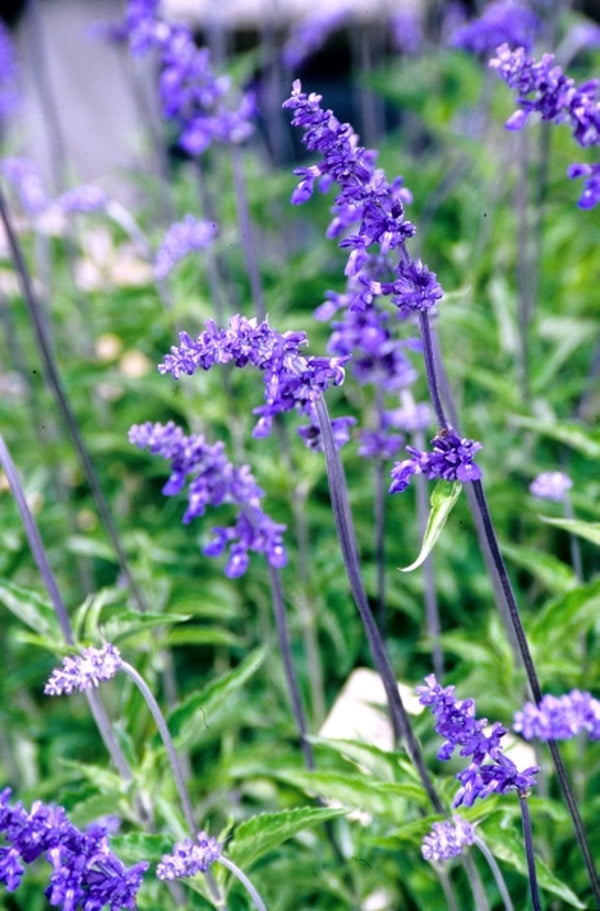Salvia farinacea Henry Duelberg
From Greg Grant’s infamous cemetery wanderings comes another clone of the US native (Oklahoma west to Arizona) Salvia farinacea, this one from the Texas gravesite of Henry Duelberg. ‘Henry’ is a bit taller than his better half (Salvia farinacea ‘Augusta Duelberg’), making a 2′ tall x 3′ wide clump of glossy, green foliage, topped with long 1′ spikes of dark royal purple-blue…a hangout for hummingbirds. This phenomenally heat- and drought-tolerant selection is for the full-sun gardener who kills everything else. Soggy soils are about the only thing that will send these to meet their namesakes.
Maintenance:
In the wild, Salvia farinacea is a prairie native that can be found growing on alkaline soils at elevations as high as 6000′. In the garden, Mealy Cup sage is a low maintenance perennial, that’s also widely grown as a summer annual where it isn’t reliably winter hardy. We have also found it to grow quite well on slightly acidic soils under garden conditions.
In the ground, Salvia farinacea can be cut to the ground in mid-to-late summer, if it gets looking a bit raggedy, and it will pop right back in a matter of weeks. We do not recommend cutting it back in fall, since the stems are hollow and tend to fill with freezing water in cold winters. Once the new plants have begun to sprout at the base in spring, they can be cut to the ground at that time.
Growing Conditions:
Salvia farinacea fares best in well-drained soils that stay on the fairly dry side, although it’s quite tolerant of rain events. Full sun also produces the most dense, best flowering plants, although it will also be successful in part sun.
Natural Impact:
Salvia farinacea is a favorite of native bumblebees, butterflies, and hummingbirds, so if you enjoy having a pollinator garden, this is a great salvia for you.











